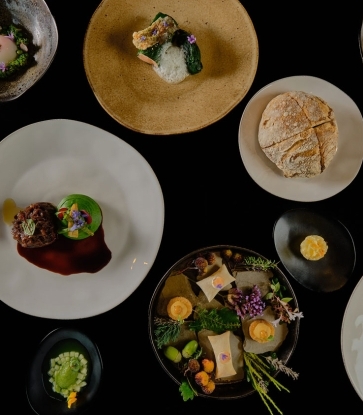

So what is behind this strange phenomenon, scientifically known as paresthesia? Scientists believe that it has something to do with a molecule called hydroxy-alpha-sanshool, naturally present in the peppers. This molecule interacts with our cell receptors differently than capsaicin, the active ingredient that causes chiles to produce the familiar burning sensation. While capsaicin triggers the same receptors that are activated when we’re burned by excessive heat, the active chemical in the Sichuan peppercorn excites tactile sensors in our lips and mouths—in other words, you feel the taste of the peppers as though your lips are being physically touched by something vibrating quickly, causing that numbness commonly associated with eating Sichuan peppercorns.
A hallmark of Sichuan cuisine
The combination of Sichuan peppercorns and dried chilies is the hallmark of ma la Sichuan cuisine, “ma” denoting the pins-and-needles sensation of peppercorn, and “la,” the heat and spiciness from the chile. It is said that the locals’ taste for bright spicy flavors can be attributed to their desire to combat the province’s brutally humid weather.
Dishes like fu qi fei pian, a cold dish of beef slices, offal, tendon and tripe in a spicy sauce, whet the appetite in Sichuan’s steamy summers, while a communal meal of ma la hotpot wards off the damp and cold in the winter. Many other popular dishes, such as Kung Pao chicken, Chongqing hotpot, ma po tofu, Dan Dan noodles and kou shui chicken, are all based on ma la seasoning.

Once confined to the Chinese kitchen—not to mention, banned in the U.S. from 1968 to 2005 for fear of crop bacteria—the ingredient has, in recent years, found its way into menus around the globe, from hipster bars to Michelin-starred restaurants.
Tom Kerridge, head chef at the Michelin-starred Hand and Flowers in Marlow, a town just outside of London, uses Sichuan peppercorns in his pickled cabbage; in Singapore, the ingredient is now used by chefs like Drew Nocente of Salted & Hung in a crispy tripe dish as a seasoning.




















